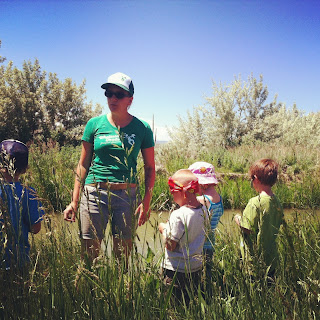Katie Wheeler, FoodCorps Service Member -- Kalispell.
Since beginning my FoodCorps service term two years ago,
one of my biggest priorities has been working to make the Flathead Valley a
more food
secure community by increasing the amount of healthy food that
is accessible to children. (Bonus points
when the healthy food is local!).
During a FoodCorps Montana training in February 2012, I
had a conversation with Katie Bark, the Project Director of Montana
Team Nutrition Program out of Bozeman.
I expressed my interested in food security issues, which prompted Katie to
invite me to attend a Montana
Partnership to End Childhood Hunger (MT-PECH) committee meeting in
Helena.
This meeting also happened to coincide with the launch of
the No Kid Hungry campaign in
Montana through a partnership with the former Governor Brian
Schweitzer, the Department
of Public Health and Human Services, and Share Our Strength. This launch and the meeting that followed
opened up my service to a whole new set of information, support, and guidance
in the fight to end childhood hunger.
I am so grateful for the opportunity to join the MT-PECH committee,
and couldn’t be more proud to represent Kalispell Public Schools and
FoodCorps. At that first meeting, I was
introduced to a document we are working on entitled “10 Steps to End Childhood
Hunger in Montana.” Each step has goals,
a 2010 baseline, and a 2013 benchmark, as well as a 2015 benchmark. The document really helps me to see how
closely FoodCorps service is connected to food security work. Facets of many FoodCorps members' service are
included among some of the steps, for instance:
Step 1: Provide
a nutrient-rich breakfast for all school children
Step 3: Expand
the reach of the Summer Food Service Program
Step 5: Guarantee that all eligible families have
access to public food programs (such as the National School Lunch Program and
the Fresh Fruit and Vegetable Program)
Step 6: Increase access for families to healthy,
affordable, locally grown food
Step 9: Offer nutrition education to children and
families on making smart food choices and active lifestyles
But the big news is that for the past year we have been
planning the Build a
Stronger Montana: End Childhood Hunger statewide summit, taking
place September 23rd-24th at Montana State
University. A primary goal of the summit
is to showcase best practices in communities across Montana that address child
hunger. We will do this through hosting
a variety of speakers from across the state, providing opportunities to network,
and facilitating discussions to give individuals and groups the resources they
need to take action in their communities.
We also have quite the list of special guests and
presenters! For example, Governor Steve
Bullock will provide the opening message and Montana’s First Lady, Lisa
Bullock, will speak to raise awareness about hunger in Montana and provide a
great understanding of the serious implications the issue has on health and our
economy. And thanks to a connection
provided by FoodCorps’ wonderful Communications Director, Jerusha Klemperer,
our keynote speaker is Lori Silverbush, co-director of the documentary A Place at the Table!
On the evening of September 23rd, MT-PECH is
co-sponsoring a screening of the film with the Bozeman Community Food Co-op and
the Bozeman Film Festival! The screening
will take place at the Emerson’s Crawford Theater at 7pm. Following the film, Lori Silverbush and husband
Tom
Colicchio, producer of the film, chef/owner of Craft Restaurants, and and Emmy-nominated “Top Chef” judge, will
participate in a panel discussion.
Please join us in the fight to end childhood hunger in Montana! Extend this invitation to your staff,
colleagues, family, friends, and networks because together we can build a
stronger Montana.
Visit https://tofu.msu.montana.edu/cs/childhunger2013/ to
register and for more information. Early
Bird registration is available until August 14th!
Post Script: The passion to end childhood hunger runs in the family. My brother, Andrew, shot this PSA for No Kid Hungry last Thanksgiving: http://www.youtube.com/watch?v=nnTo4vTjJtM
















